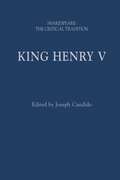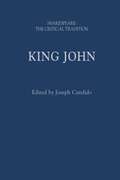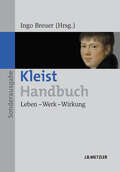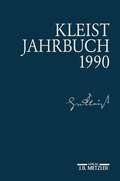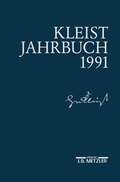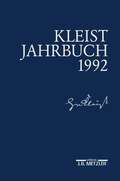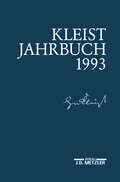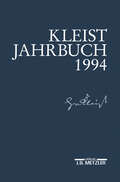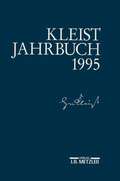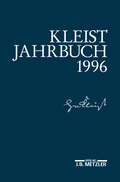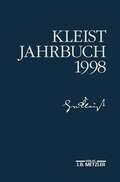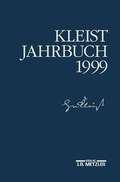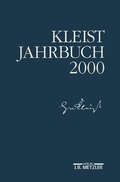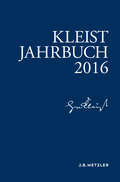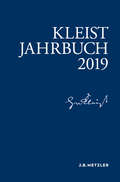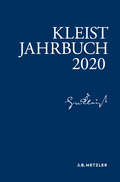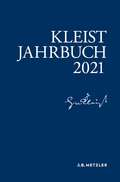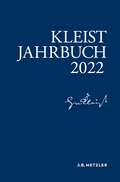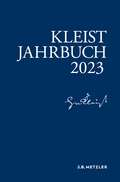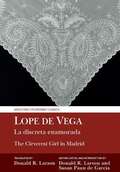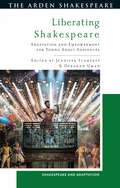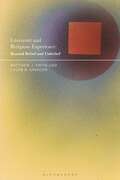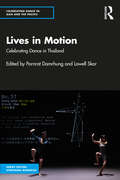- Table View
- List View
Juggling clown (UEB Contracted)
This is an image of a circus clown juggling with three Indian clubs. He is facing to the front so all his facial features and limbs can be found. There is a locator dot shown, which will be at the top left of the page when the image is the right way up. At the top of the page is one of the Indian clubs flying through the air. Down the page from this is the clown's hat with a bobble on the top, the clown's hair, two eyes, red comedy nose and very wide smiley mouth. The clown wears a very large bow tie around his neck and braces on his chest to hold up his baggy trousers. He has his arms held out to either side juggling with two more Indian clubs above them. At the bottom of the page are his baggy trousers and his feet wearing giant clown boots.
Juggling clown (UEB uncontracted)
This is an image of a circus clown juggling with three Indian clubs. He is facing to the front so all his facial features and limbs can be found. There is a locator dot shown, which will be at the top left of the page when the image is the right way up. At the top of the page is one of the Indian clubs flying through the air. Down the page from this is the clown's hat with a bobble on the top, the clown's hair, two eyes, red comedy nose and very wide smiley mouth. The clown wears a very large bow tie around his neck and braces on his chest to hold up his baggy trousers. He has his arms held out to either side juggling with two more Indian clubs above them. At the bottom of the page are his baggy trousers and his feet wearing giant clown boots.
King Henry V: Shakespeare: The Critical Tradition (Shakespeare: The Critical Tradition)
With its depiction of the victorious English king, Henry V has divided critical opinion and remains one of the more controversial of Shakespeare's histories. This new volume in Shakespeare: The Critical Tradition increases our knowledge of how Shakespeare's plays were received and understood by critics, editors and general readers. The volume offers, in separate sections, both critical opinions about the play across the centuries and an evaluation of their positions within and their impact on the reception of the play. The chronological arrangement of the text-excerpts engages the readers in a direct and unbiased dialogue, whereas the introduction offers a critical evaluation from a current stance, including modern theories and methods. Thus the volume makes a major contribution to our understanding of the play and of the traditions of Shakespearean criticism surrounding it as they have developed from century to century.
King John: Shakespeare: The Critical Tradition (Shakespeare: The Critical Tradition)
This new volume in Shakespeare: The Critical Tradition increases our knowledge of how Shakespeare's plays were received and understood by critics, editors and general readers. Updated with a new introduction providing a survey of critical responses to the plays since the late 1930s to the present day, the volume offers, in separate sections, both critical opinions about the play across the centuries and an evaluation of their positions within and their impact on the reception of the play. The chronological arrangement of the text-excerpts engages the readers in a direct and unbiased dialogue, whereas the introduction offers a critical evaluation from a current stance, including modern theories and methods. Thus the volume makes a major contribution to our understanding of the play and of the traditions of Shakespearean criticism surrounding it as they have developed from century to century.
Kleist-Handbuch: Leben – Werk – Wirkung
Auf den Spuren Kleists. Er fasziniert nicht nur durch seine rätselhafte Persönlichkeit auch Kleists Werke entfachen oftmals Kontroversen. Immer wieder werden sie zum Prüfstein neuer wissenschaftlicher Fragestellungen. Das Handbuch bündelt die komplexe Forschungslage und präsentiert Leben, Werk und Wirkung. Weitere Kapitel informieren über Themen und Diskurse, mit denen sich Kleist auseinandergesetzt hat. Fundiertes Grundwissen und nützliche Anregungen für eine umfassende Beschäftigung mit Heinrich von Kleist.
Kleist-Jahrbuch 1998 (Kleist-Jahrbuch)
Das Kleist-Jahrbuch 1998 erscheint erstmals unter neuer Herausgeberschaft: Günter Blamberger zeichnet für den Abhandlungsteil, Sabine Doering und Klaus Müller-Salget sind für den Rezensionsteil verantwortlich. Im Zentrum jedes Jahrgangs stehen wie bisher die Abhandlungen. Für 1998 sind u.a. Beiträge vorgesehen von Andreas Kablitz (Kleists Robert Guiscard" im Spiegel frühneuzeitlicher Konzepte des Tragischen), Bernhard Dotzler ("Federkrieg". Kleist und die Autorschaft des Produzenten), Hansjörg Bay ("Als die Schwarzen die Weißen ermordeten". Nachbeben einer Erschütterung des europäischen Diskurses in Kleists "Die Verlobung in St. Domingo"), Michel Chaouli (Devouring Metaphor: Disgust and Taste in Kleists "Penthesilea"), Bernhard Greiner (Wende zur Kunst und Engführung ihres Versprechens: Kleists Schaffen im Horizont der Kantischen Philosophie, am Beispiel des "Robert Guiscard"), Wolfgang Riedel (Kleists "moralische Erzählungen" und die Anthropologie um 1800), Helmut J. Schneider (Zu Kleists Anekdoten und dem anekdotischen Prinzip seiner poetischen Welt) und Ulf Abraham (Kanondebatten am Beispiel Kleists). Seit Jahrgang 1990 beim Verlag J.B. Metzler. Die Bände erscheinen in jährlicher Folge. Sie können zur Fortsetzung bezogen werden.
Kleist-Jahrbuch 1999 (Kleist-Jahrbuch)
Unter dem Titel »Kleists Duelle« behandelte die internationale Jahrestagung der Heinrich-von-Kleist-Gesellschaft im Juni 1998 in Hamburg vielfältige Aspekte von Kleists Streitkultur.
Kleist-Jahrbuch 2000 (Kleist-Jahrbuch)
Das diesjährige Kleist-Jahrbuch widmet sich schwerpunktmäßig dem Rahmenthema Kleist und die Weltliteratur", u.a. mit Beiträgen von Anthony Stephens (Melbourne), Wolfgang Pircher (Wien) zu "Vergeltung Recht und Politik bei Kleist", Christian Moser (Bonn) zu "Fallgeschichten bei Kleist und Montaigne", Claudia Liebrand Köln) zu Kleists Re-Lektüren von Boccaccios Novellen, Walburga Hülk-Althoff (Siegen) über Kleist und Flaubert sowie Ingo Breuer Köln) zur Tradition der Novelle. Des weiteren enthält der Band die Abteilung "Abhandlungen", u.a. mit einem Beitrag von Michael Wetzel (Kassel), sowie einen umfangreichen Rezensionsteil."
Kleist-Jahrbuch 2016
Das aktuelle Jahrbuch dokumentiert die Verleihung des Kleist-Preises 2015 mit den Reden der Preisträgerin Monika Rinck, der Vertrauensperson der Jury Heinrich Detering und des Präsidenten der Heinrich-von-Kleist-Gesellschaft Günter Blamberger. Darüber hinaus enthält das Jahrbuch Beiträge zu Kleists Werken und Rezensionen wissenschaftlicher Neuerscheinungen zu Kleist.
Kleist-Jahrbuch 2019 (Kleist-Jahrbuch)
Das Kleist-Jahrbuch 2019 dokumentiert die Verleihung des Kleist-Preises 2018 mit den Reden des Preisträgers Christoph Ransmayr, der Vertrauensperson der Jury László Földényi und des Präsidenten der Heinrich-von-Kleist-Gesellschaft Günter Blamberger. Den Schwerpunkt bilden die von Anne Fleig betreuten Beiträge der internationalen Jahrestagung der Heinrich-von-Kleist-Gesellschaft (in Kooperation mit der Deutschen Schillergesellschaft) ›Kleist und Schiller - Auftritt der Moderne‹ (u.a. von Peter-André Alt, Claudia Benthien, Christian Moser und Dorothea von Mücke) und die von Matthias N. Lorenz und Thomas Nehrlich geleitete Tagung ›Kleists Anekdoten – Zur Größe der Kleinen Formen‹ im Kleist-Museum, Frankfurt (Oder). Rezensionen und Miszellen beschließen den Band.
Kleist-Jahrbuch 2020 (Kleist-Jahrbuch)
Das Kleist-Jahrbuch 2020 dokumentiert die Verleihung des Kleist-Preises 2019 mit den Reden der Preisträgerin Ilma Rakusa, der Vertrauensperson der Jury Yoko Tawada und des Präsidenten der Heinrich-von-Kleist-Gesellschaft Günter Blamberger. Abhandlungen zu Kleists Werken, Miszellen zum Umfeld Kleists, Nachrufe auf Hans Joachim Kreutzer und Alexander Weigel sowie Rezensionen wissenschaftlicher Neuerscheinungen zu Kleist beschließen den Band.
Kleist-Jahrbuch 2021 (Kleist-Jahrbuch)
Das Kleist-Jahrbuch 2021 enthält neben Beiträgen zur ›Politik des Rechts im Werk Heinrich von Kleists‹ von Bernd Fischer, Antonia Eder, David Pan, Bernhard Greiner, Johannes F. Lehmann, Tim Mehigan und Christian Moser weitere Abhandlungen von Rüdiger Görner, Andreas Moser, Patrick Fortmann und Tobias Krüger. Rezensionen wissenschaftlicher Neuerscheinungen beschließen den Band.
Kleist-Jahrbuch 2022 (Kleist-Jahrbuch)
Das Kleist-Jahrbuch 2022 dokumentiert die Verleihung des Kleist-Preises 2020 im November 2021 mit den Reden des Preisträgers Clemens J. Setz, der Vertrauensperson der Jury Daniela Strigl und des Präsidenten der Heinrich-von-Kleist-Gesellschaft Günter Blamberger. Den Schwerpunkt bilden die von Andrea Allerkamp und Martin Roussel betreuten Beiträge der internationalen Jahrestagung der Heinrich-von-Kleist-Gesellschaft 2021 ›Um einen Kleist von außen bittend‹ (u.a. von László F. Földényi, Rüdiger Görner, Andrea Pagni, Paul Michael Lützeler und Carlotta von Maltzan). Abhandlungen zu Kleists Werken und Rezensionen wissenschaftlicher Neuerscheinungen zu Kleist sowie zu seinen historischen und systematischen Kontexten beschließen den Band.
Kleist-Jahrbuch 2023 (Kleist-Jahrbuch)
Das Kleist-Jahrbuch 2023 dokumentiert die Verleihung des Kleist-Preises 2022 im November 2022 mit den Reden der Preisträgerin Esther Kinsky, der Vertrauensperson der Jury Paul Ingendaay und der Präsidentin der Heinrich-von-Kleist-Gesellschaft Anne Fleig. Den Schwerpunkt bilden die von Andrea Bartl und Thomas Wortmann betreuten Beiträge einer Mannheimer Tagung zu ›Kleist in den Medien der Gegenwart‹ sowie Abhandlungen und Miszellen zu Kleists Werken (u.a. von Urs Jenny und Günter Dunz-Wolff zur Entstehung der beiden Fassungen des ›Michael Kohlhaas‹). Rezensionen wissenschaftlicher Neuerscheinungen zu Kleist sowie seinen historischen und systematischen Kontexten beschließen den Band.
La discreta enamorada / The Cleverest Girl in Madrid: Lope de Vega (Aris & Phillips Hispanic Classics)
This book is a Spanish/English edition of Lope de Vega’s La discreta enamorada. The core of the book consists of two texts: a critical edition of Lope’s play in Spanish and Donald R. Larson’s English translation/adaptation of that work. Common to the two texts are explanatory notes focusing on historical, cultural, and literary references. The Spanish text is further clarified by elucidations of difficult words or passages. The texts are preceded by a substantial introduction (discussing conventions of comedy, the comedia de capa y espada and its variation known as the comedia urbana, the political, social, and economic contexts of early 17th-century Madrid) and are followed by a critical apparatus that lists important variants that may be found in previous editions of Lope’s play.
Liberating Shakespeare: Adaptation and Empowerment for Young Adult Audiences (Shakespeare and Adaptation)
The collective trauma of the COVID-19 pandemic. Digital shaming. Violence against women. Sexual bullying. Racial slurs and injustice. These are just some of the problems faced by today's young adults. Liberating Shakespeare explores how adaptations of Shakespeare's plays can be used to empower young audiences by addressing issues of oppression, trauma and resistance. Showcasing a wide variety of approaches to understanding, adapting and teaching Shakespeare, this collection examines the significant number of Shakespeare adaptations targeting adolescent audiences in the past 25 years. It examines a wide variety of creative works made for and by young people that harness the power of Shakespeare to address some of the most pressing questions in contemporary culture – exploring themes of violence, race relations and intersectionality. The contributors to this volume consider whether the representations of characters and situations in YA Shakespeare can function as empowering models for students and how these works might be employed within educational settings. This collection argues that YA Shakespeare represents the diverse concerns of today's youth and should be taken seriously as art that speaks to the complexities of a broken world, offering moments of hope for an uncertain future.
Literature and Religious Experience: Beyond Belief and Unbelief
This book challenges the status quo of studies in literature and religion by returning to “experience” as a bridge between theory and practice. Essays focus on keywords of religious experience and demonstrate their applications in drama, fiction, and poetry. Each chapter explores the broad significance of its keyword as a category of psychological and social behavior and tracks its unique articulation by individual authors, including Conrad, Beecher Stowe and Melville. Together, the chapters construct a critical foundation for studying literature not only from the perspectives of theology and historicism but from the ways that literary experience reflects, reinforces, and sometimes challenges religious experience.
Lives in Motion: Celebrating Dance in Thailand (Celebrating Dance in Asia and the Pacific)
Lives in Motion celebrates dance in Thailand, focusing on the diversity of Thailand’s dance cultures and their place in today’s world. Giving voice to eminent artists and scholars on the complex roles that Thailand is pursuing for artful movement at home and abroad, the book provides key perspectives on Thai dance traditions and practitioners. It explores the many forms and meanings in contemporary dance, changing local traditions in the country, the evolution of Thai dance on the global stage, and hybrid features of the Thai dance world. The book examines how hybridity has been integral to dance cultures in Thailand and discusses how they have actively adapted and negotiated their knowledge in relation to modernity and globalization. Developing new models, standards and sites for dance, movement and theater, dance in Thai has been advancing in innovative ways, whether it is to include fresh forms of skilled bodily movement or to expand in new arenas like tourism and online platforms. Similarly, old systems of training, which included artists’ homes, palaces, and temples, have been adapted into the new world of modern education, media, home schooling, and new community rituals. A pioneering contribution on Thai performing arts, this volume examines contemporary Thai dance cultures in the local, national, regional, and global contexts. It will be of great interest to scholars and researchers of dance and performance studies, cultural studies, Southeast Asia studies, and art.

